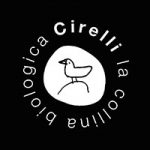- No products in the cart.
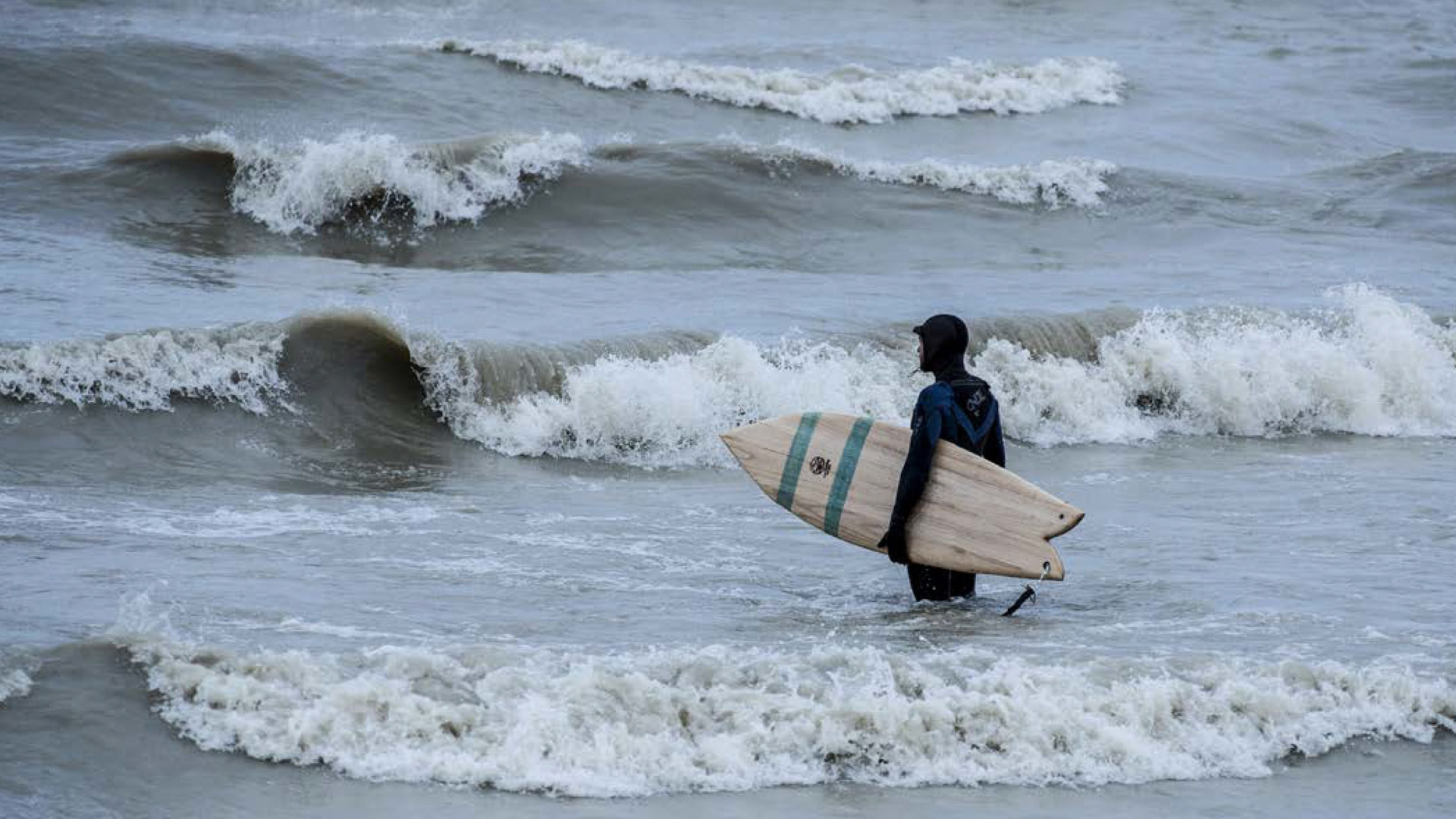
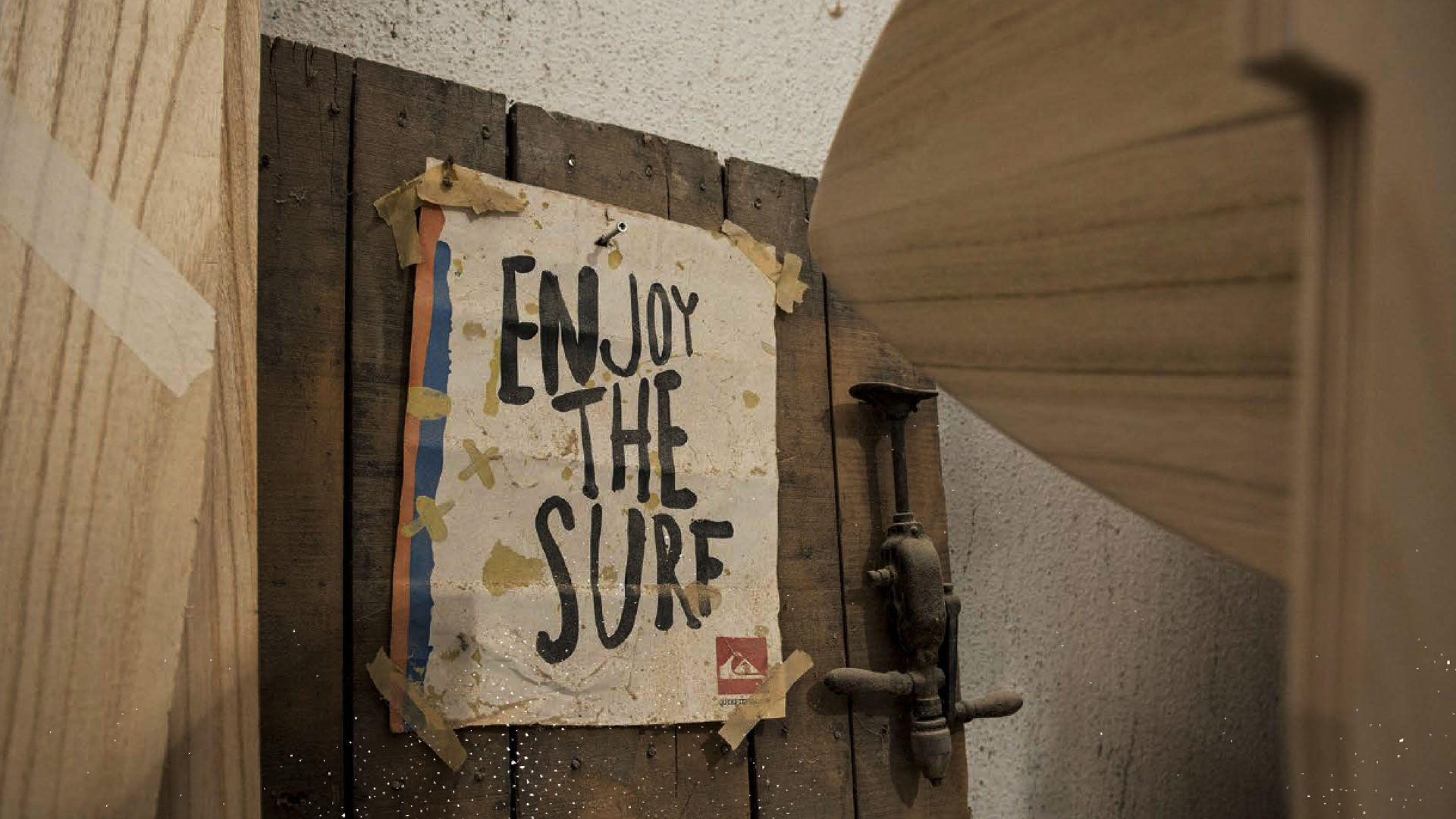
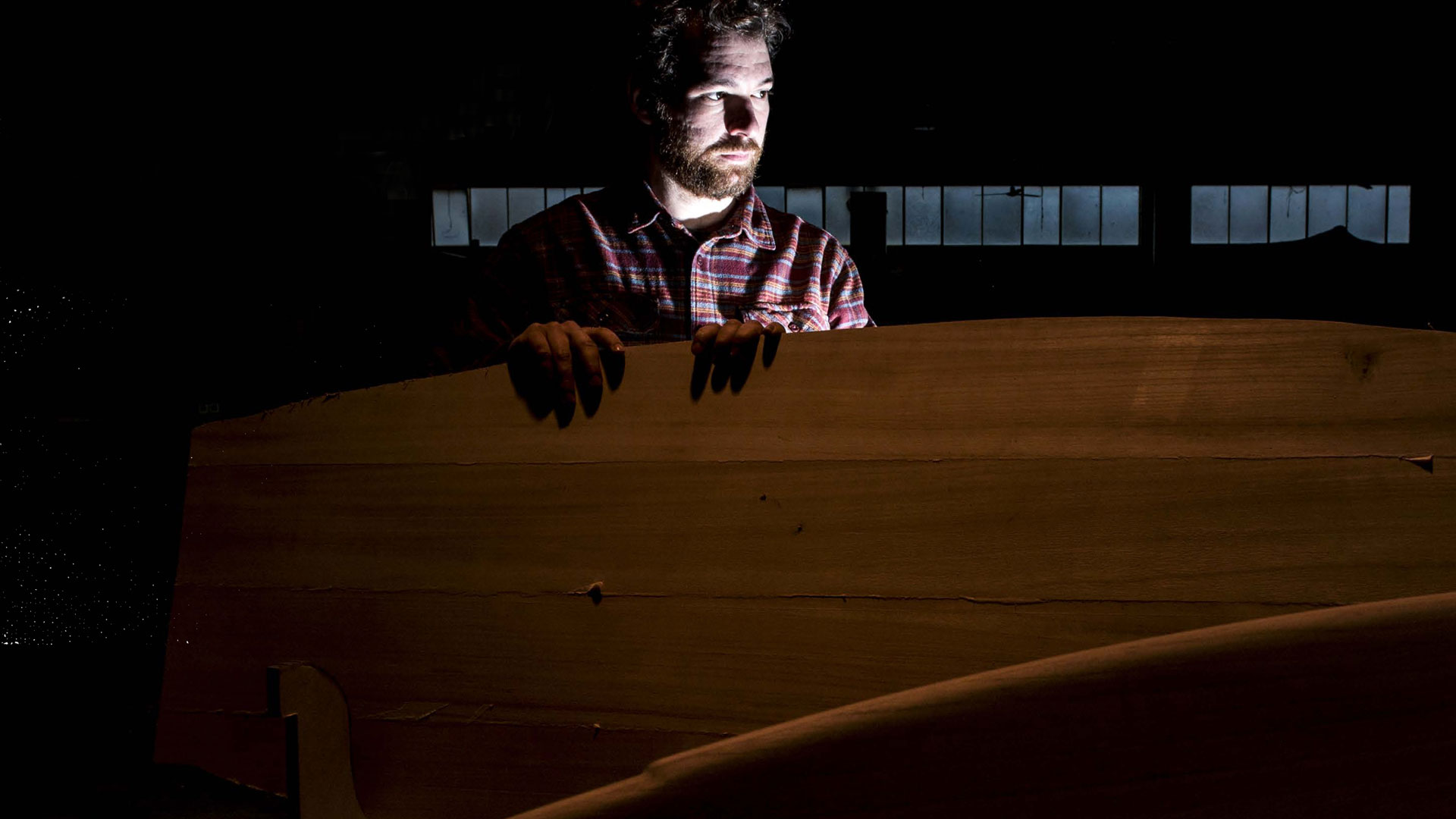
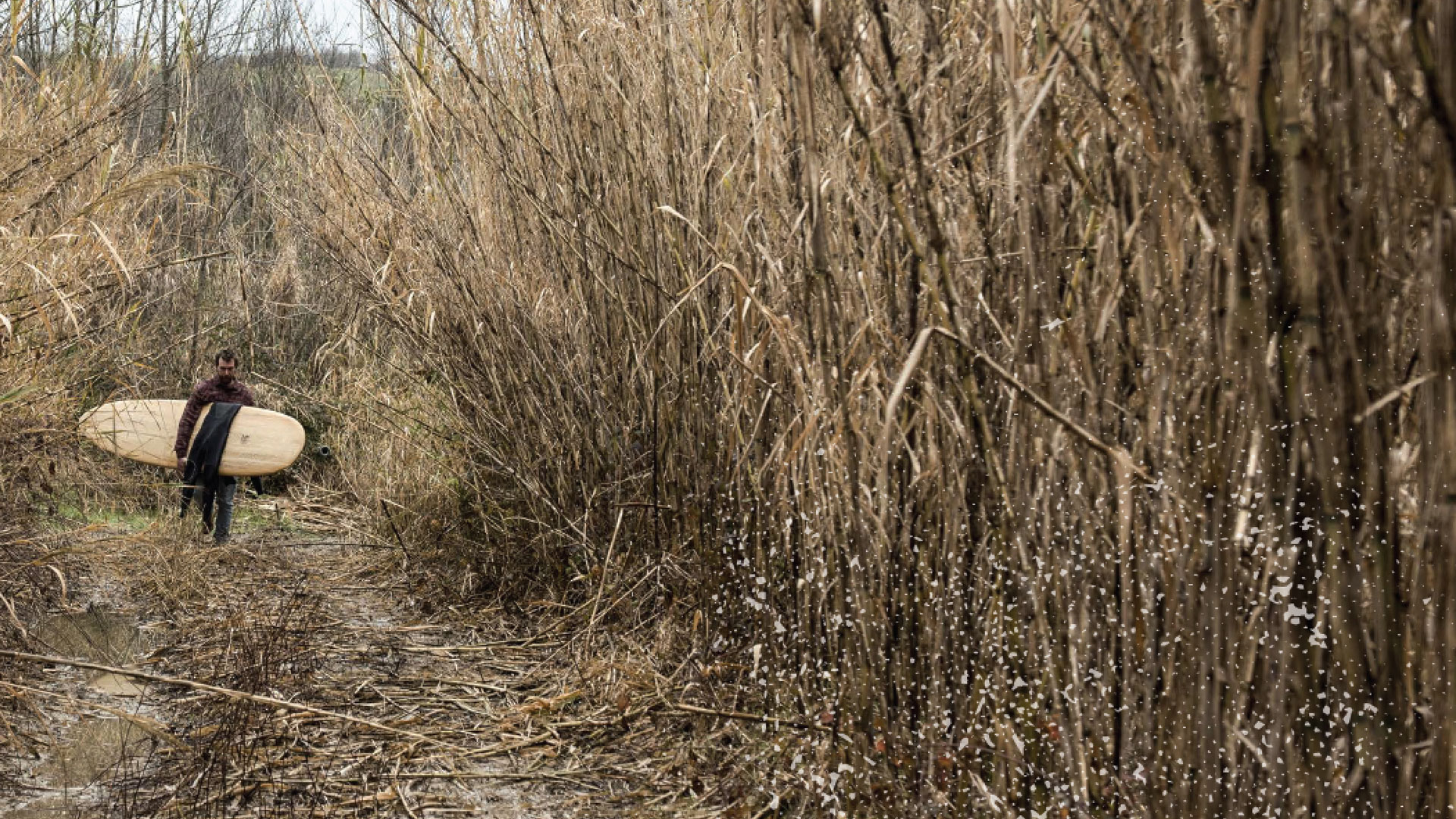
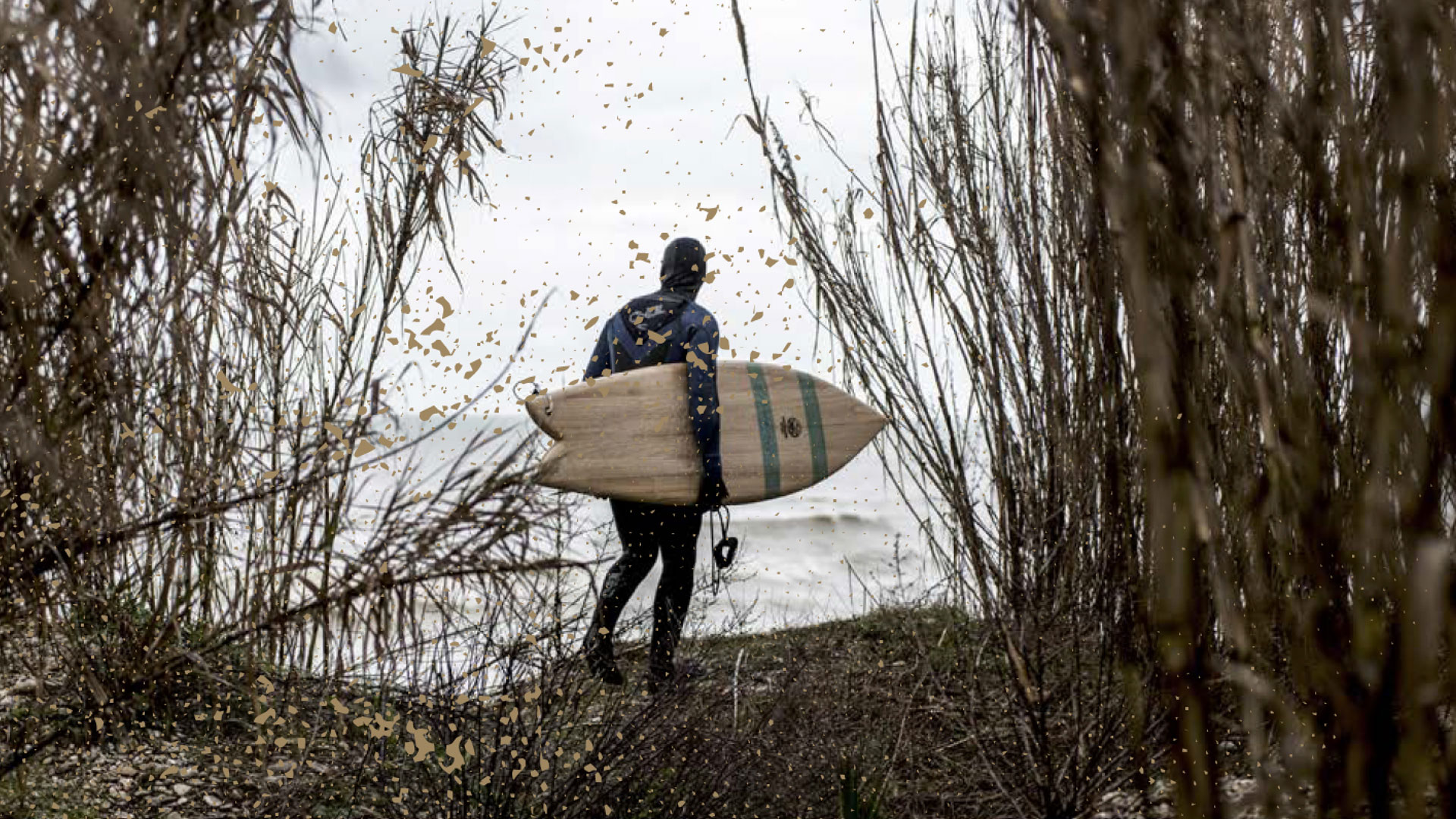
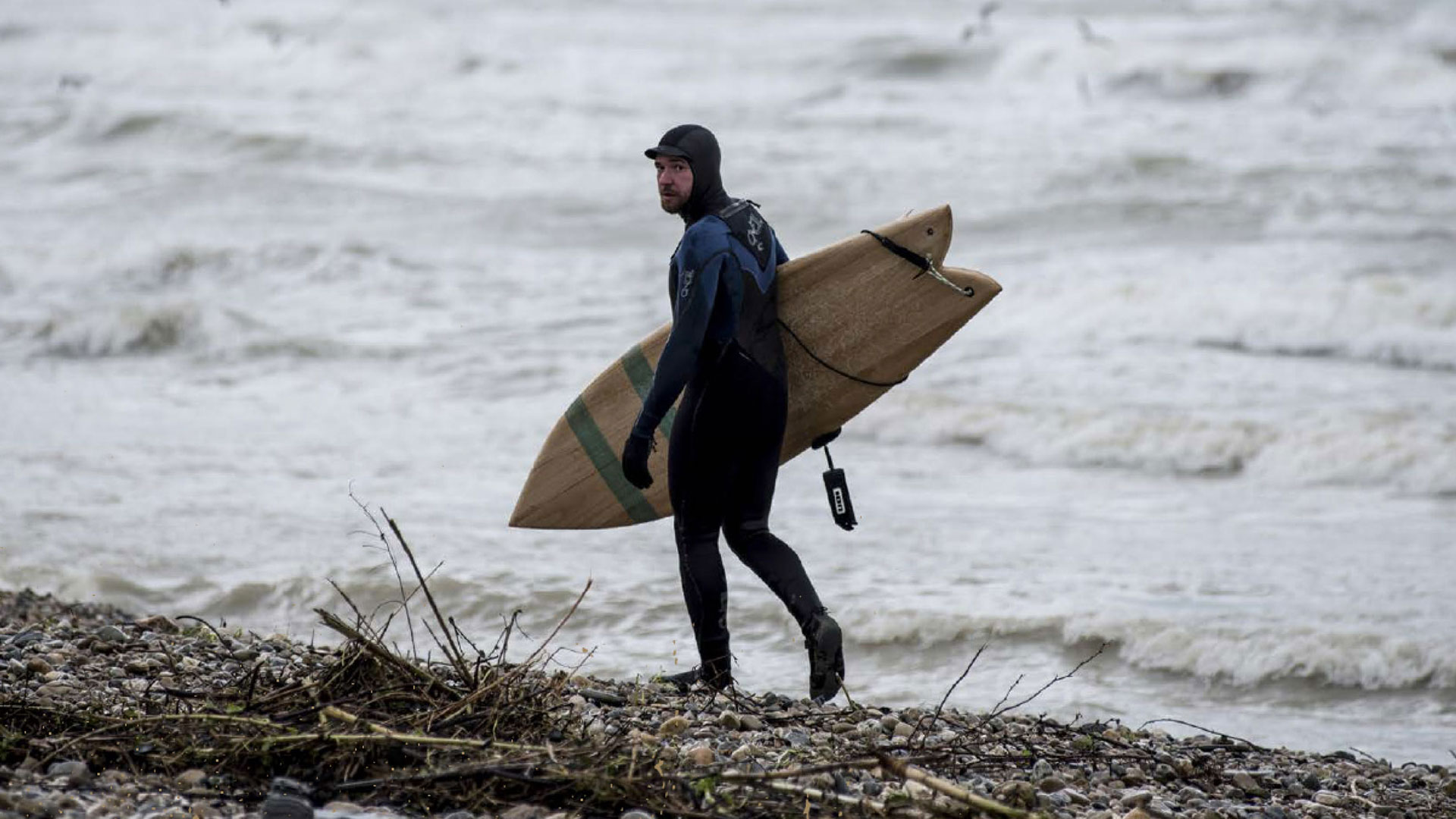
“Alone in a corridor waiting locked out He got up outta there ran for hundreds of miles
He made it to the ocean had a smoke in a tree. The wind rose up set him down on his knee
A wave came crashing like a fist to the jaw. Delivered him wings ‘Hey look at me now’
Arms wide open with the sea as his floor. Oh power oh. He’s flying
Whole. High wide, oh”
Pearl Jam – Given to Fly
The van trudges on the dirt road, towards an unusual warehouse. We talk about surfing and the mind travels along the coast of California. But no, forget ocean waves and Route 66. This is Abruzzo.
Two gear changes away from Teramo, Basciano welcomes us with dusty industrial sounds. At the door of the mysterious shed, a young man is wai- ting for us. With his rebel hair and beard, unbut- toned plaid shirt fluttering in the wind, shorts and Vans he seems to have jumped out of an Ed- die Vedder video and showcases a well-defined attitude. He is called Eugenio Celli, class of ’88, born and bred in Teramo. A nomadic spirit, he, together with is partner Federica Ciarrocchi and his brother Federico, gave birth to the No-Made Board project. It is a bold and ambitious under- taking, which aims to re- evaluate the artisanal foundation of surf culture. Especially in a terri- tory not devoted to this discipline like the Abruz- zese one. Yet, the idea moves in balance – like a board on the waves – on two pulsating vectors: one, the blood between two brothers; the other, the wide knowledge that connects the concept of brotherhood to a group of artisans. Three people from different backgrounds brought together and united by passion and a mutual feeling of territo- rial belonging. It might even have been destiny, why not: he, Eugenio, crazy for surfing and carpentry, Federica, an expert in communication, graphics and photography and, to complete the triangle, Federico and his engineering training.
We have cleared them as craftsmen, as these three young people are – without a shadow of a doubt – artisans. Interpreters of a craft 2.0, even 3.0, having added the vision, gesture and mentality of ancient skills to a professional approach made by modern technologies and tools. Creating a com- pelling encounter between nature, ancestral dex- terity and contemporary rhythm; a fluid expressive continuity; an on-the-road project that springs from an introspective journey: Eugenio’s travels through Australia. His passion, however, does not originate from the crest of a wave, but from the wheels of a skateboard, suspended in evolu- tionary tricks between Teramo, Ancona and Por- tonovo. Here, he falls in love with the aquatic surf corridors too, following the flow of curiosity all the way to the land of kangaroos, looking closely at the shaping room laboratories, before returning to Abruzzo.
Back in Italy, he starts toying with a conscious goal: “If the first surfboards were made of wood, I want to find a way to adapt them to modern times. Retaining performance and a low envi- ronmental manufacturing impact.” The choice of using wood is connected to the legacy of his grandfather, a professional doctor and hobby carpenter. Taking advantage of the family company’s construction site for refractory materials, Eugenio uses both, will and elbow grease, experimenting with methods and means to build surfboards. Selftaught but dedicated, he is ready to learn from a network of training programs with small local artisans: “I asked for concepts with openness and a desire to learn. From the coachbuilder, I got information on paints and fiberglass, from the carpenter advice on wood types and how to model them. In their eyes they had a light of spontaneous sharing, as it is rare to see young people passiona- te about craftsmanship or see them believe in the cultural traces of the territory “.
The game turns into real work. A brand is born, the name associating the spirit of nomadism with the culture of surfing. The Anglo-Italian words exorcise the inflated notion of handmade pro- ducts, the logo tells of Abruzzo using evocative landscapes: the panorama view from the port of Giulianova, where the boys used to surf; they summarize the time in the Adriatic sea, on the hills of Teramo skateboarding and on the summit of Gran Sasso skiing, climbing and camping.
In 2014, No-Made starts in its most primordial form, the number zero board being jealously kept in stock. Only wood and eco-sustainable finishes – instead of the polyurethane foam of ordinary boards – it is the “Harley Davidson of surfing”, as Eugenio jokes. The popular paulownia wood is considered the main material, but balsa, okumè, as well as red and white cedar are also available. As a surfboard has to remain strong and light simulta- neously and requires a complex geometric shape, it calls for the use of mouldable wood types. Skateboards are made in maple, birch or beech, using harder or solid wood types for retro models.
The work blends cutting-edge technologies and machinery (CAD and CNC) with authentic craft smanship. Everything, from the skeleton (the soul of the board), to the shaping of edges, lines and decorations in fabric, as well as the application of resin to waterproof the board is done manually. There are customizable boards, which can be tai- lored to aesthetic tastes or the surfing experience of the client, as well as DIY workshops that spre- ad the history of extreme craftsmanship all over Abruzzo, in a perpetual motion.
Starting within the roots of the territory, talent, passion and curiosity spread: “Abruzzo is an incredible basin of landscape and cultural resources. But sometimes we seem unable to communicate who we are to the outside world”, concludes Eu- genio. “The paradox is that we do not do surfbo- ards in Teramo because we have perfect waves. Quite the contrary! We do them here because I was born here. We are proud to pass on artisan gestures to the future, beyond the borders of our coasts “.
Text of LORENZO SANDANO
Picture DAVIDE D’AMATO
